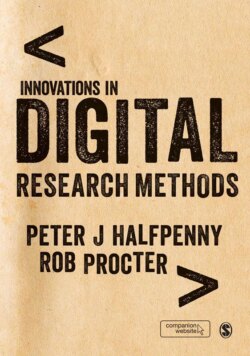Читать книгу Innovations in Digital Research Methods - Группа авторов - Страница 21
На сайте Литреса книга снята с продажи.
Chapter 6: Modelling and Simulation
ОглавлениеQuantitative simulation and modelling are perhaps the most obvious examples of the potential for e-Research methods and tools to revolutionize the study of complex socio-economic problems, and their applications are becoming increasingly widespread. New sources of data and more powerful computational resources have made possible the development of more complex and sophisticated techniques and, of course, larger-scale models. As Birkin and Malleson point out in this chapter, while modelling and simulation in the social sciences have been around for fifty years, prompted by an earlier wave of innovations in computation, recent advances in both data and computation are now having a profound effect.
This chapter provides an introduction to the state of the art in four model classes that are of particular interest to social scientists – systems dynamic models, statistical and behavioural models, microsimulation models and agent-based models. Examples are presented of each of these classes – a retail or residential location model (spatial interaction model or mathematical/systems dynamic model); a traffic behaviour model (discrete choice or statistical model); a demographic model (microsimulation model); and a crime model (agent-based model). Birkin and Malleson observe that while building ever more sophisticated models of social systems has never been easier, the task of demonstrating that such models faithfully represent an underlying social reality remains the key challenge. They then relate some experiences and lessons from building a prototype social simulation infrastructure capable of providing support for the whole research lifecycle, and they stress, in particular, the importance of model reproducibility, reusability and generalizability. They conclude with a summary of some of the – as yet – unexploited opportunities for social simulation presented by new sources of data (e.g., using mobile phone data to update in real time models of population movements) and the challenges (e.g., data ownership and ethics) that will have to be met if these are to be realized.
